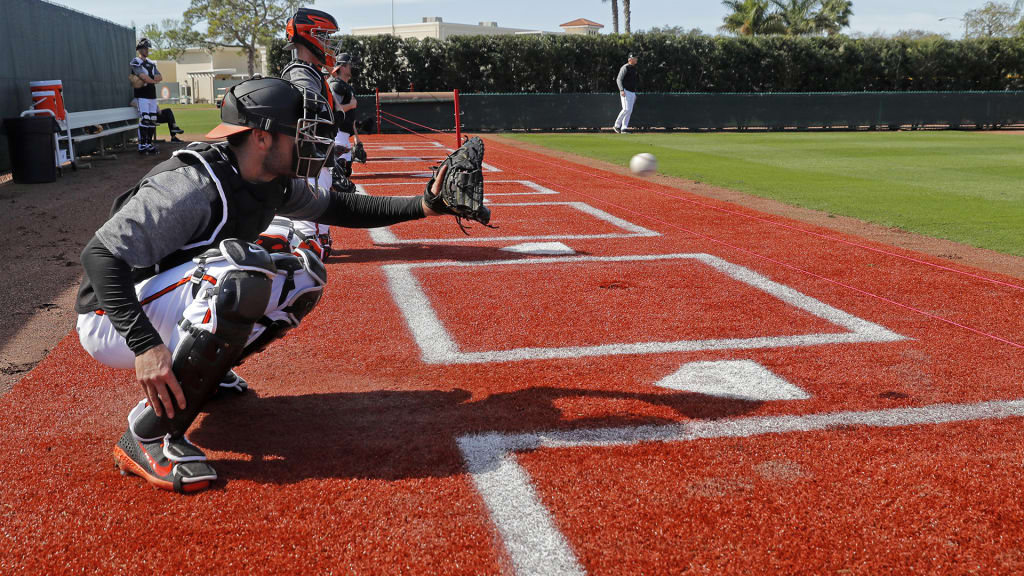
SARASOTA, Fla. -- Increased use of analytical data has been one of the most visible changes all over Orioles camp this spring, from the high-speed Edgertronic cameras lining the bullpen, to Minor League pitching coordinator Chris Holt’s spin axis seminars on the back fields, to the long list of players championing the exposure to extra information they weren’t privy to before.
Behind the scenes, the club is making significant progress in catching up with the rest of the industry as well.
In the four months since their front office turned over, the Orioles have buoyed their analytics team with four new full-time staffers, increasing the department’s size five-fold in that span, MLB.com has learned. The group is also aided by a handful of highly skilled interns, swelling the department to nearly a dozen members.
The additions signal a significant culture change for the Orioles, who spent much of baseball’s data revolution watching from the sidelines. Baltimore’s three-person analytics team ranked among the smallest in the sport in 2018. By the time the calendar turned, only one developer, Di Zou, remained employed. Zou is now the lone holdover on staff under assistant general manager of analytics Sig Mejdal, who followed new general manager and executive vice president Mike Elias from Houston with a reputation as one of the game’s most talented analytical minds.
Mejdal, the former NASA engineer and blackjack dealer, was largely credited with helping rebuild the Astros into World Series champions in 2017. Elias, who also worked with Mejdal with the Cardinals prior to their tenures in Houston, called his hiring “a major moment for the franchise” in November.
Since then, Mejdal has hired two developers and two analysts, all with either computer science, math or statistics backgrounds. Two sported Master’s degrees in analytics. All arrived from industries other than baseball, and all were targeted for featuring one particular quality.
“Mandatory is a passion for baseball,” Mejdal told MLB.com. “There are no shortage of qualified persons, and there is something attractive when you’re building your organization from scratch. The skills we’re looking for, technologically you have to be uber-capable. … In addition to that, you need to be passionate and inspired and motivated by baseball. This needs to be your dream job. Because those skills that I mentioned are the ones in most demand in this world, and other industries will pay more.”
Serious candidates were put through a rigorous five-step application process that included a detailed questionnaire, a simulated sample assignment and an in-person interview. Mejdal said he received upwards of 700 resumes for the two analyst positions and 500 for developer roles.
Those hired are now tasked with creating the type of statistical infrastructure Mejdal and Elias used to great success in Houston and St. Louis, where data models optimized their decision-making across a range of areas, from player development to talent acquisition to the MLB Draft. There is also an organization imperative to disseminating the information fluidly at the big league level, which has already begun in earnest this spring.
Meanwhile, the hiring process remains ongoing. Mejdal said he hopes to eventually sport a full-time staff of nearly a dozen members, though he did not put a timetable on that goal. The average Major League team sports an analytics staff of more than eight members, according to a recent study published by The Athletic. The Dodgers’ 20-person team ranked as the largest, according to that report.
